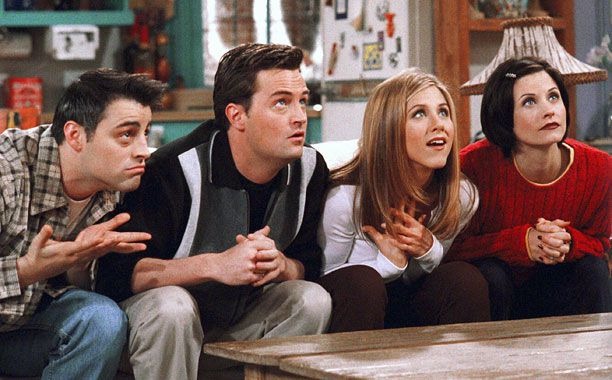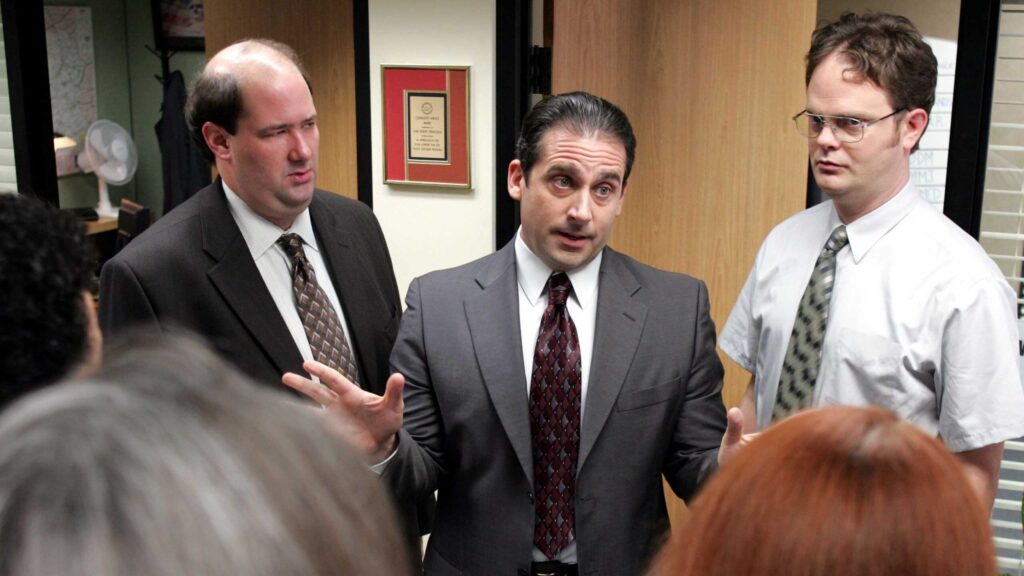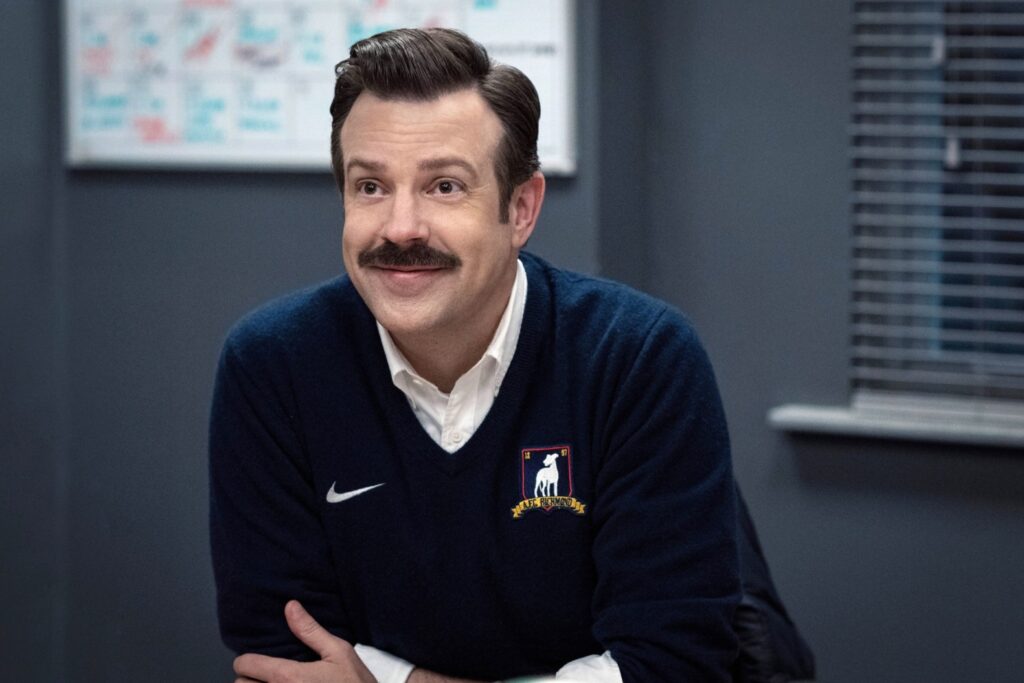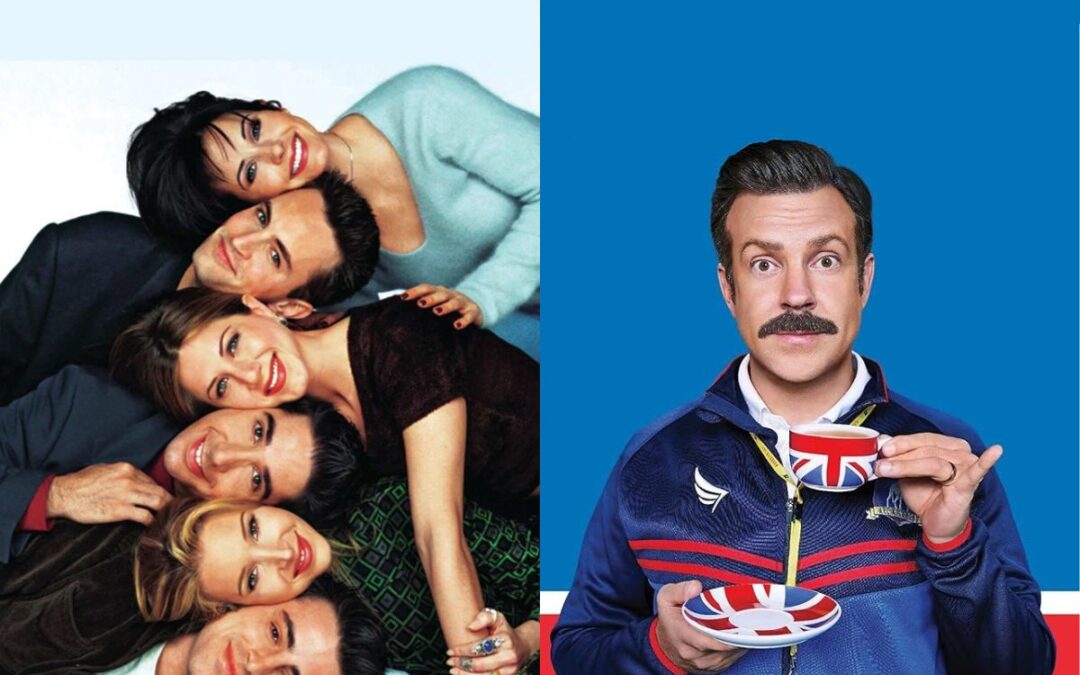Summary- People’s expectations have changed over time, and sitcoms have changed from comedies with laugh tracks like Friends to stories with emotional depth like Ted Lasso. This change shows a shift from humor that is only on the surface to stories that are driven by characters and balance wit with vulnerability.
There has been a huge shift in sitcoms in recent years. It is way evident when we compare the characters and storylines from then and now. It is not that the changes introduced are all bad or it is all good but the balance of both is what we have witnessed so far. Where the OG shows like Friends have shaped the meaning of it, Ted Lasso brings a fresh wave of necessary changes. Time also plays a crucial role in shaping the trends of what the audience wants. Let’s take a look at how evolution really took place.
Sitcoms of the ’90s

In the 1990s and early 2000s sitcoms made a revolutionary entry in the media domain. It was a cultural event for most as it took a steady pace with time. The filming in front of a live studio and a laugh track in the background became the staple of the genre. This style was majorly popularized by Friends which used a multi-camera setup with a prominent laugh track to signal jokes and keep the energy high. You could tune in to Friends halfway through and still be one of the gang. The dramas were seldom serious. The punchlines hit like clockwork. The viewers laughed along with the characters but it wasn’t because the show altered their existence, but majorly because it made their day less stressful. But even then, fissures began to appear. Audiences started demanding more than just a mere repeat. They started asking for more development in characters, and a humour which had a message.
Streaming Changed Everything

The introduction of streaming did more than just shift how we consumed shows, it also redirected what types of stories could be told. It somehow released the restrictions of network timing and the commercials. This change gave the creators a new way where they can experiment more on the structure and subject matter.
The Office was one of the shows which pioneered this shift. They continued to be humorous but also let the characters develop over the years. The characters like Jim and Pam were not just prediction material but it gave the audience more than that. The characteristics of both gave the audience a new way in which they saw more about their individualistic nature. Michael Scott wasn’t a walking punchline but he carried a deeper sense of meaning. He was usually tragic and occasionally even moving. This gradual change helped in laying the groundwork for another type of sitcom in which laughter became a secondary focus.
Step in Ted Lasso

The introduction of Ted Lasso is where the actual shift takes place. The show used a single-camera structure and consisted of 30 to 40 minutes per episode. This was followed with a serialized storytelling and left room for soft humour in between. The old ways where the humour catered around the story changed in Ted Lasso. What’s so great about Ted Lasso is his candour. The wit is there but so is vulnerability in the characters. The characters struggle with a lot of things inwardly and also with worldly happenings. And unlike traditional sitcoms, those struggles aren’t resolved in 22 minutes.
The show makes us laugh and feel both in the same scene. It did not shy away to pause and let the characters have a moment to breakdown. This kind of patience wasn’t common a decade ago.
Also Read: Top 5 Longest Running TV Shows That Shaped Generations
The Change in Characterizations

The most notable difference between older and newer sitcoms is how characters are being defined. Characters in older shows were often focused on one singular theme which made them easy to guess characters. They were sympathetic but hardly ever surprising. The introduction of characters like Rebecca from Ted Lasso and Ava from Abbott Elementary changed this notion. These roles portrayed a flawed individual who was at times funny, often strong and changeable. These characteristics made the audience connect with the character more as they can relate with them on a deeper level. This hints the outcome that the viewers were no longer just watching them but rather growing along with them.
Final Thoughts
The development is not simply a matter of industry trends or platform shifts, it’s a matter of us. We, as audiences, have become more emotionally intelligent. We desire to be made to laugh and be challenged, comforted, and occasionally surprised. Shows like Friends will never run out of trend, they are the epitome of old-school comedy. However, newer shows like Ted Lasso bring in the fresh perspective of narrative techniques. In the end it is all a matter of preference when it comes to these shows. Each comes with their own pros and cons but one thing which remains constant is the way these series never miss to entertain their audience.
Written by Kenbi Riba

